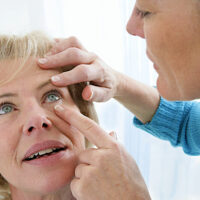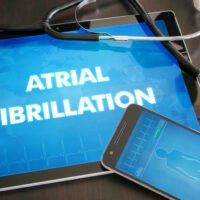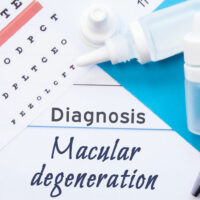10 common signs of anemia that should not be ignored

Anemia is a widespread blood disorder that affects millions of people in the country; however, it often goes unnoticed until symptoms become severe. This condition occurs when a person’s body does not have enough red blood cells (RBCs), or they lack sufficient hemoglobin, the protein that carries oxygen to the body’s tissues. It is necessary to understand the common signs that indicate anemia to diagnose and manage the condition early.
Recognizing signs and symptoms of anemia
Identifying the signs and symptoms of anemia is crucial for early intervention and management. Some common symptoms and signs that may indicate anemia, include:
Fatigue
Fatigue is one of the major symptoms of anemia. It occurs because there aren’t enough RBCs to carry the required oxygen to the body’s tissues and organs. As a result, one may feel persistently tired, weak, and lacking energy, even after a good night’s sleep. Everyday activities that were once routine for them may become challenging due to this overwhelming sense of weariness.
Pale skin
Anemia can cause noticeable changes in one’s skin and nail color. When hemoglobin levels are low, the skin may appear paler than usual. This paleness is often most evident in areas like the face, the inner lining of the lower eyelids, the palms, and the nail beds. Moreover, the nails may even develop a bluish tint, which is a sign of inadequate oxygen supply.
Shortness of breath
Shortness of breath or breathlessness is a common sign of anemia. One may particularly experience it when engaging in physical activities. When the body can’t supply enough oxygen to the muscles during exertion, it leads to a sensation of breathlessness and difficulty catching breath. Climbing stairs, brisk walking, or even some daily tasks may leave one feeling winded and needing to rest more frequently.
Dizziness and lightheadedness
Anemia can result in low blood pressure and reduced blood flow to the brain, which can lead to feelings of dizziness or lightheadedness. One may experience these sensations when standing up too quickly or moving after being seated for a long time. This symptom can also make one more prone to fainting or feeling unsteady.
Cold hands and feet
Cold extremities, especially in the hands and feet, are a direct consequence of anemia. Reduced blood circulation means less warm blood reaches these areas, causing them to feel cold to the touch. One may even experience cold hands and feet in warm environments.
Headaches and cognitive impairment
Inadequate oxygen supply to the brain can cause headaches and difficulty concentrating. One may experience frequent headaches, and their ability to focus and think clearly may be compromised. These cognitive impairments can affect one’s daily productivity and overall quality of life.
Chest pain
In severe cases of anemia, the heart has to work harder to compensate for the reduced oxygen-carrying capacity of the blood. This increased workload can lead to chest pain or discomfort, similar to what one might experience during angina. Further, it is crucial to differentiate between anemia-related chest pain and cardiac issues. So, a medical evaluation is essential if one experiences chest pain.
Brittle nails
Brittle or fragile nails that are prone to splitting, breaking, or peeling can be a sign of anemia. Anemia-related nutritional deficiencies, such as iron and biotin deficiencies, can affect nail health. When the body lacks these essential nutrients, it can lead to changes in nail texture and strength. If one notices persistent issues such as brittle nails alongside other anemia symptoms, they must consult a healthcare professional for a thorough evaluation and appropriate treatment.
Restless leg syndrome (RLS)
RLS is a neurological disorder characterized by uncomfortable sensations in the legs and a strong urge to move them. Anemia, mainly when it results from iron deficiency, can be associated with RLS. Low iron levels can affect the brain function, contributing to the development of RLS symptoms.
Rapid heartbeat (Tachycardia)
Anemia can lead to an increased heart rate, a condition known as tachycardia. When blood lacks sufficient oxygen, the heart must pump faster to compensate and deliver oxygen to vital organs. This accelerated heart rate can be noticeable during physical activity or even at rest. If one experiences unexplained rapid heartbeat along with other anemia symptoms, it is essential to consult a healthcare provider for evaluation.
Types of anemia
Anemia is a group of disorders with various causes and has several types. Here are some common types of anemia:
Iron-deficiency anemia
This is the most prevalent form of anemia that occurs when the body lacks enough iron to produce sufficient hemoglobin. This type of anemia can result from a lack of iron-rich foods in one’s food regimen, poor iron absorption, or blood loss due to menstruation, injury, or gastrointestinal issues.
Vitamin-deficiency anemia
Inadequate intake of essential vitamins like vitamin B12 and folic acid can lead to anemia. These vitamins are crucial for RBC production. Vitamin-deficiency anemia can also occur due to conditions that impair nutrient absorption, such as celiac disease.
Hemolytic anemia
Hemolytic anemia occurs when a person’s RBCs are destroyed faster than their body can produce them. This can be caused by inherited conditions or autoimmune disorders.
Aplastic anemia
Aplastic anemia is a rare and severe form of anemia that occurs when a person’s bone marrow fails to produce enough blood cells. This condition can be acquired or inherited.
Anemia of chronic disease
Chronic diseases like chronic kidney disease, inflammatory disorders, and certain cancers can lead to anemia.
How to prevent anemia
Nutrient-rich food regimen
Eating a balanced meal that includes iron-rich foods like lean meats, beans, and leafy greens can help prevent anemia. For vegetarians and vegans, incorporating plant-based iron sources and considering fortified foods is essential.
Regular check-ups
Routine medical check-ups can help identify anemia early, especially if one has risk factors or symptoms. Moreover, if one has a chronic illness that increases their risk of anemia, working closely with their healthcare team will help them manage the condition.





